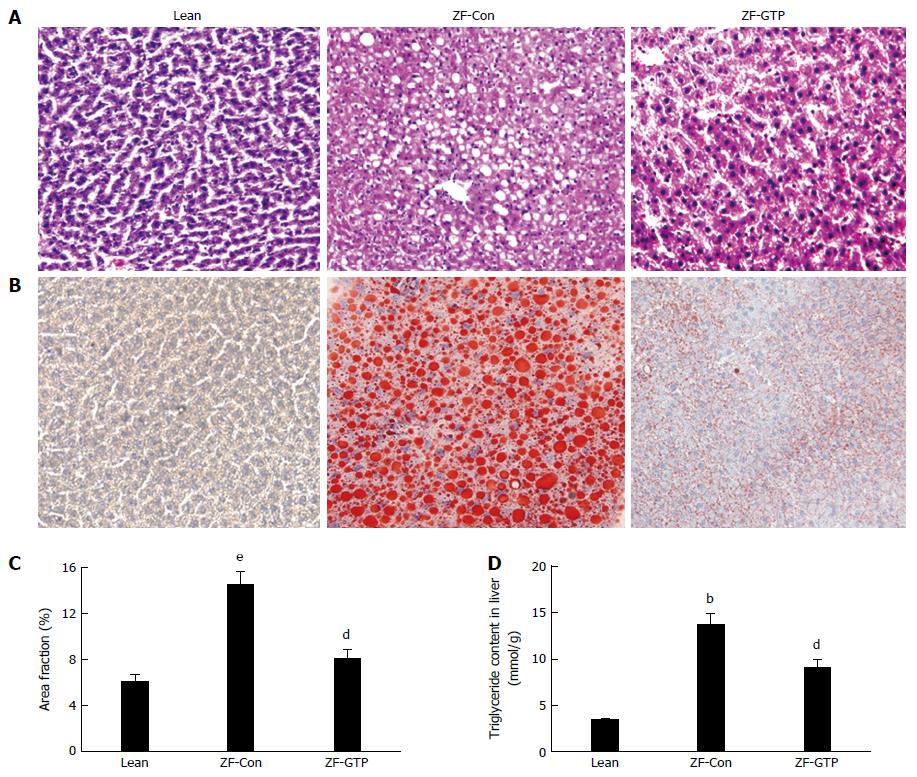Copyright
©The Author(s) 2017.
World J Gastroenterol. Jun 7, 2017; 23(21): 3805-3814
Published online Jun 7, 2017. doi: 10.3748/wjg.v23.i21.3805
Published online Jun 7, 2017. doi: 10.3748/wjg.v23.i21.3805
Figure 2 Reduction of hepatic steatosis and triglyceride content with green tea polyphenols treatment.
A: Images were stained with H&E to visualise macrovesicular steatosis in liver sections at × 400 magnification. Compared to the livers in lean control rats, a larger unstained area that consisted of fat vacuoles was seen in ZF control rats; B: Representative ORO staining of liver samples from lean, ZF-Con and ZF-GTP rats. A larger red area that consisted of lipid droplets (B, C: ORO staining; × 400 magnification) and higher triglyceride contents (D) in the livers of ZF-control rats. GTP treatment significantly reversed these changes in the liver. Data are expressed as mean ± SME from 6-8 rats each group. bP < 0.01, eP < 0.001 vs Lean group; dP < 0.01 vs ZF-Con group. GTP: Green tea polyphenols; ZF: Zucker fatty.
- Citation: Tan Y, Kim J, Cheng J, Ong M, Lao WG, Jin XL, Lin YG, Xiao L, Zhu XQ, Qu XQ. Green tea polyphenols ameliorate non-alcoholic fatty liver disease through upregulating AMPK activation in high fat fed Zucker fatty rats. World J Gastroenterol 2017; 23(21): 3805-3814
- URL: https://www.wjgnet.com/1007-9327/full/v23/i21/3805.htm
- DOI: https://dx.doi.org/10.3748/wjg.v23.i21.3805









